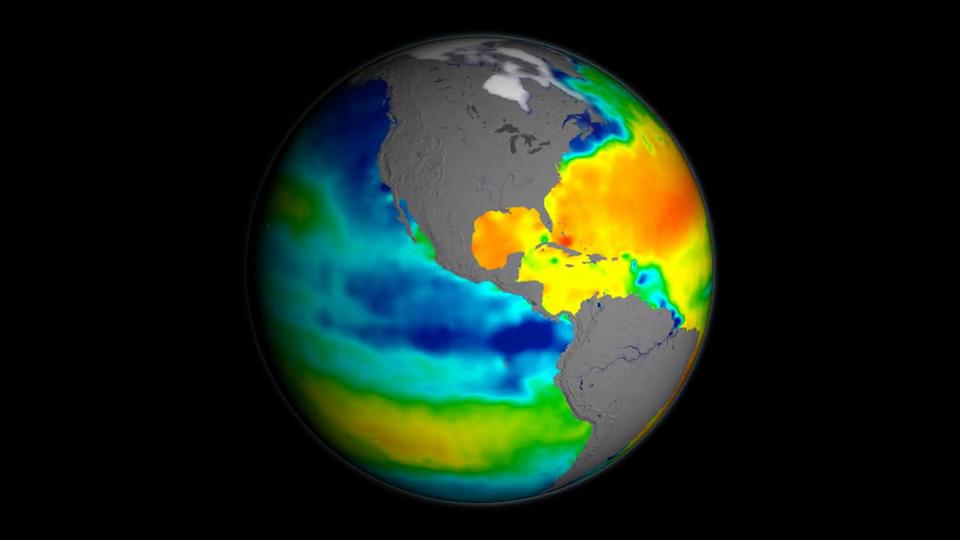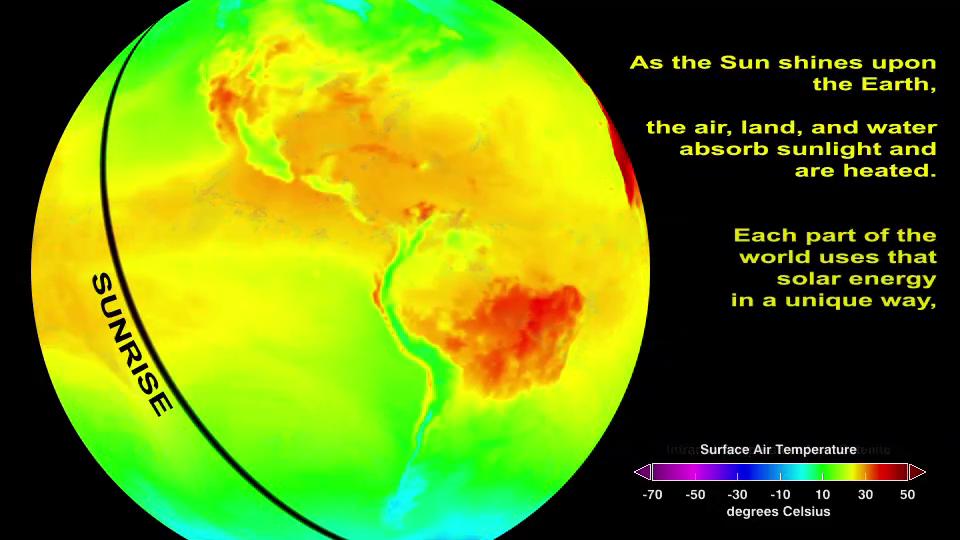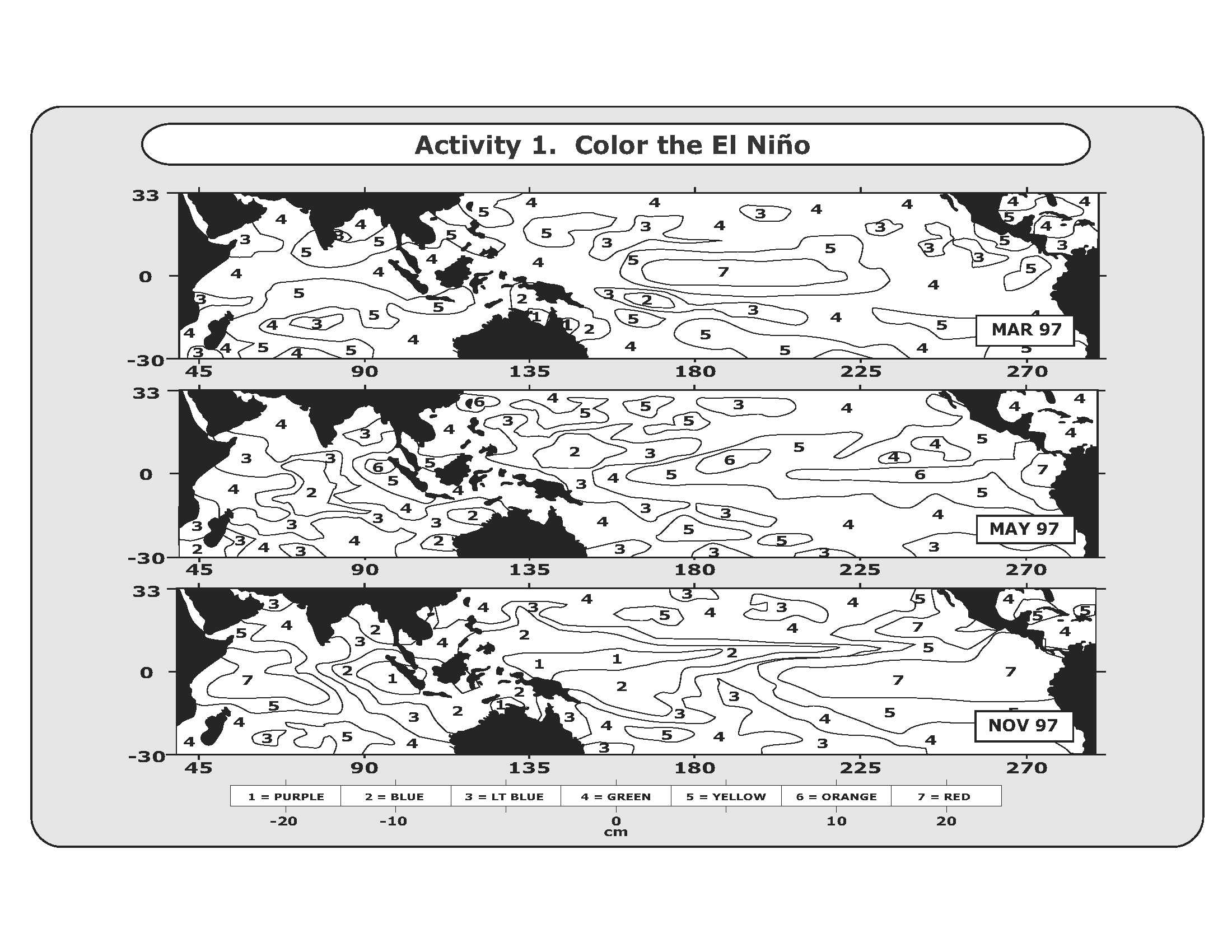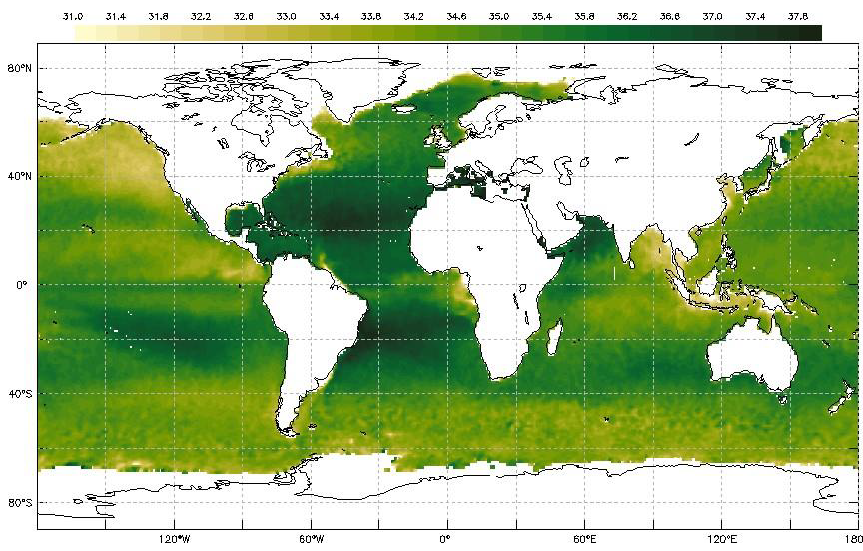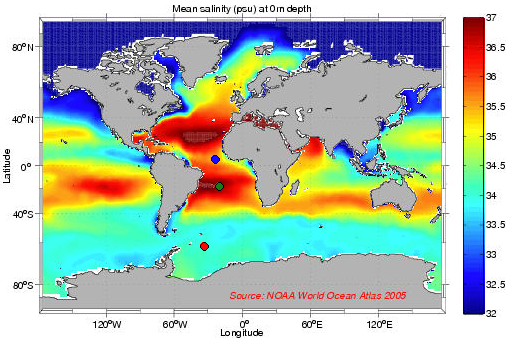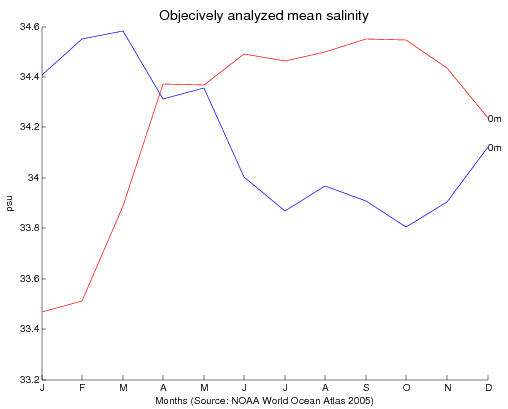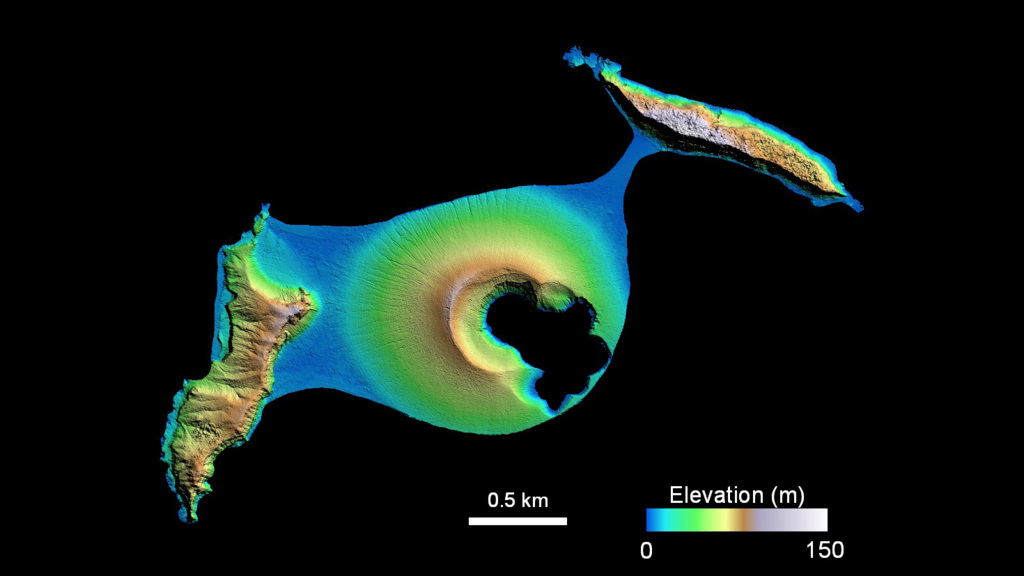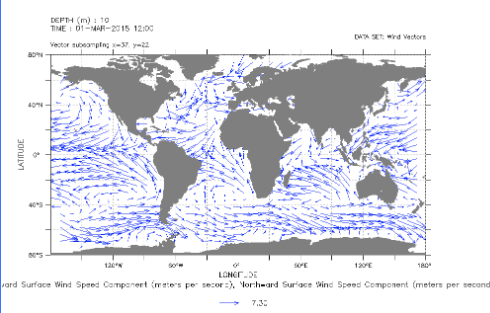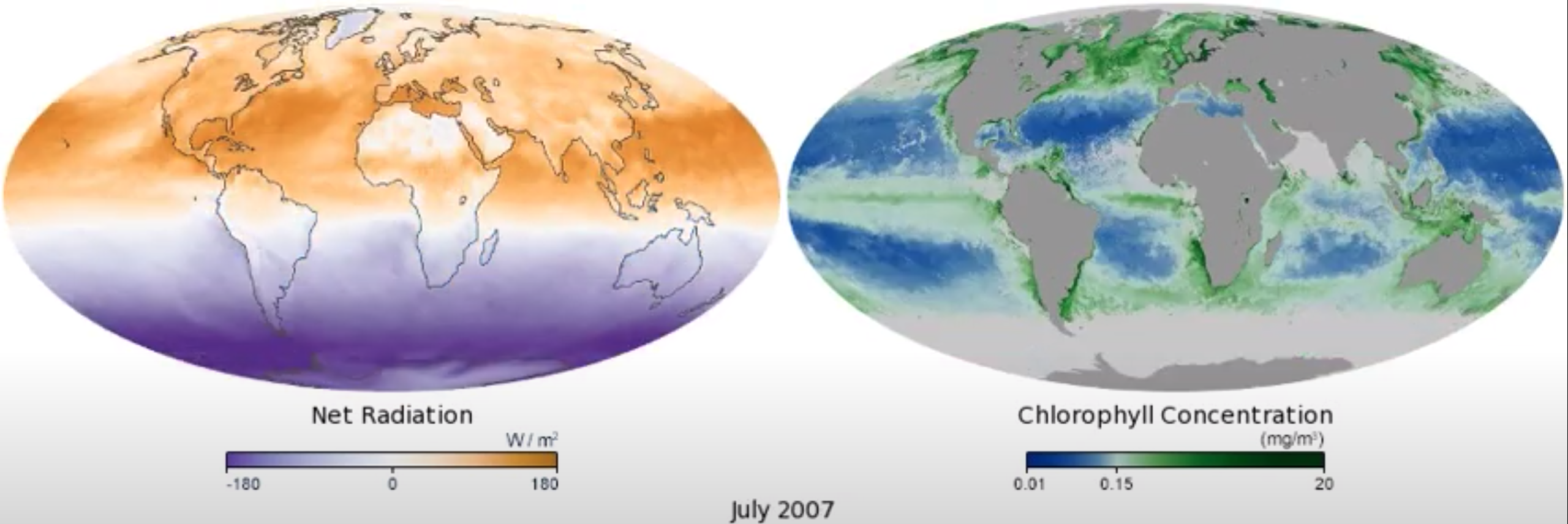This NASA visualization shows sea surface salinity observations (September 2011-September 2014). Students review the video and answer questions.
List of all Hydrosphere Mini Lessons




Students review a video showing how the ocean is warmed by solar energy. This is the first video of a four-part series on the water cycle, which follows the journey of water from the ocean to the atmosphere, to the land, and back again to the ocean.
This mini lesson focuses on the 2015-2016 El Niño event and how its weather conditions triggered regional disease outbreaks throughout the world. Students will review a NASA article and watch the associated video to use as a tool to compare with maps related to 2
Students will use coloring sheets to create a color coded model of El Niño and analyze it. If the Data Literacy Map Cube is used with this, students will color their models first.
Exploring salinity patterns is a great way to better understand the relationships between the water cycle, ocean circulation, and climate.
In this mini lesson, students use in-water profiles of historical ocean data to analyze how sea surface salinity varies with depth.
This mini-lesson features time-series graphs of mean salinity at the surface for the Arctic and Antarctic regions. A series of questions guides students in their analysis.
Students examine satellite images of a recently formed island to identify areas of erosion and deposition.
Students review an animation of monthly average wind speed at 10 meters above the ocean surface for our global ocean to analyze the relationship between winds and ocean surface currents.
This mini lesson engages students by watching a NASA video related to seasonal chlorophyll concentration as it relates to net radiation using NASA's Aqua satellite. Students will examine the model and answer the questions.






